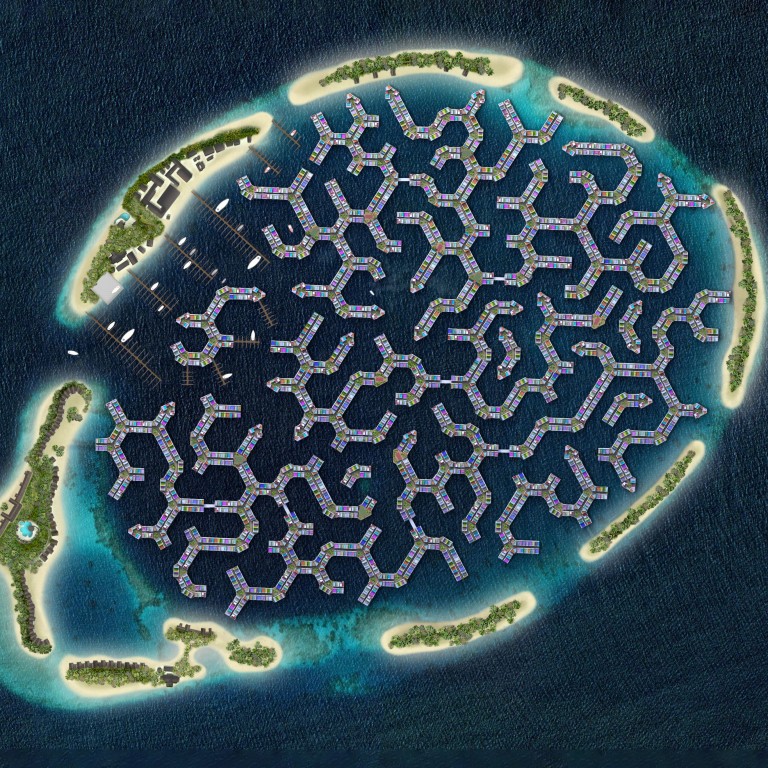
How floating cities and architecture being built around the world ‘solve many problems’ when it comes to climate change
- From a floating city in the Maldives to a park in Amsterdam and residences in Miami, on-water structures are addressing the impact of climate change
- Hong Kong’s Business of Design Week 2022 Summit will hear from two Dutch architects currently building on-water structures
Given rising sea levels and the extreme floods of 2022, the notion of a climate-resilient city based on water seems counterintuitive.
However, attendees at Hong Kong’s Business of Design Week (BODW) 2022 Summit will hear the case for just such a model, with examples being built now in environmentally vulnerable locations around the world.
To be held from November 30 to December 3, the 20th BODW will be the first since 2018 that international speakers are able to attend in person.
“For the past few editions, we have been challenged [first by social unrest, then Covid-19] to make the best of the situation through a hybrid format, and by fostering new partnerships with a local TV broadcaster and live-stream portals,” says Eric Yim, chairman of the Hong Kong Design Centre, which organises the event.
“It is exciting that, finally, a number of speakers will be flying into Hong Kong from the Netherlands [BODW’s strategic partner], France, the UK, Italy and Thailand.”
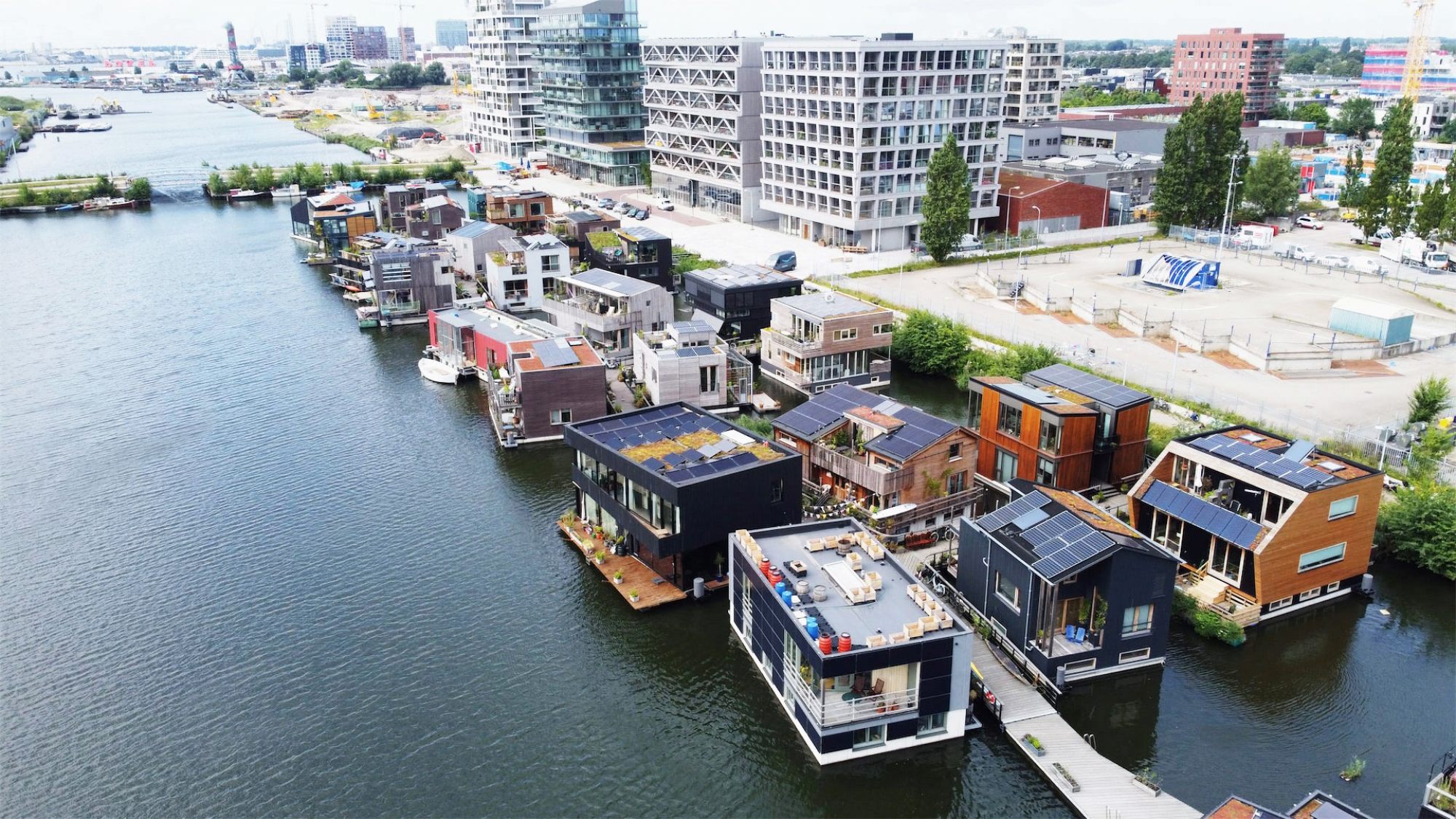
This year’s theme is “Design for Change”, with a focus on five pillars: brand transformation, culture and the city, metaverse and metaliving, new urban models, and social design innovation.
The summit will feature celebrated design talents from Hong Kong, alongside more than 60 of their counterparts worldwide, discussing “our future as design takes up the role as a force for good”, Yim says.
During the panel discussion on “Blue Urban Models: Building Climate-Resilient Neighbourhoods”, the audience will hear from two Dutch architects currently building on-water structures.
Floating projects by Koen Olthuis, CEO at Waterstudio.NL, include a city in the Maldives; a theatre in Lyon, France; a floating park in Amsterdam, the Netherlands; and houses in Miami, the US. Another example, by Marthijn Pool, co-founder of Space&Matter, is a self-sufficient floating village in Amsterdam.
For us, the sea represents a lot of blue battery
Sara Klomps, director at Zaha Hadid Architects, will add to the discussion, covering the responsibility of architects and urban planners to construct lower-emission buildings in the first place.
Olthuis, who hails from the Netherlands, where 20 per cent of the land is below sea level, believes floating structures “solve many problems in the evolution of the city”.
Given the acceleration of climate change, he feels the world is at a tipping point. Even for Hong Kong, a dense city surrounded by water, it is “logical” to build on water. “Why wouldn’t we research the possibilities?” he asks.
One advantage is longevity, he says. “A building on land might last for, say, 30 or 50 years before the site is redeveloped for other uses. On water, a structure can be reconfigured to respond to changes in demand. The response is not only flexible, but also much faster – so we upgrade the performance of our cities.”

But how are floating structures environmentally friendly?
Olthuis says technology enables the use of seawater for cooling and heating, and floating solar fields for energy production. “For us, the sea represents a lot of blue battery,” he says.
Floating infrastructure, he insists, is “absolutely” a solution in places where sea levels are rising.
In the Maldives, an archipelago of low-lying islands infamously being submerged because of climate change, Waterstudio has designed a floating city for 20,000 people.
High-end furniture made of scrap a sustainable success for Dutch designer
Set on a lagoon 10 minutes by boat from the capital Male, it will consist of 5,000 housing units, restaurants, shops and schools connected by floating roads. The first residents will start moving in in early 2024, and the whole city is slated for completion by 2027.
In Panama, where homes on some islands are threatened by the rising Caribbean Sea, Waterstudio has designed a series of SeaPods – residences of 833 square feet (77 square metres) perched on stilts in the sea.
Residents, who will start moving in by late 2023, will have their groceries delivered by drone, their rubbish collected by an autonomous vessel, and will commute via small boats.

For smaller nations threatened by rising sea levels or storm damage, Waterstudio also offers the design of critical functional infrastructure such as floating power plants, agriculture plots and health-care facilities.
Technology enables such structures to respond dynamically to different kinds of water fluctuations: from daily tidal movements to the incremental creep of climate change, and even an extreme event like a tsunami.
As for the impact on the marine environment, Olthuis assures that it is positive. Although the floating pods Waterstudio has developed are made of concrete, he says they encourage corals and algae to grow.
‘We design in the East, for the East’: architect’s celebration of Asian style
“I think we will see this kind of architecture everywhere that there is a need for space and a focus on sustainability.”
Pool agrees that advancing sea levels require a more dynamic response to urban development.
The Space&Matter-designed floating Schoonschip project – completed in 2021 – comprises 46 dwellings connected by a jetty and houses 150 people.
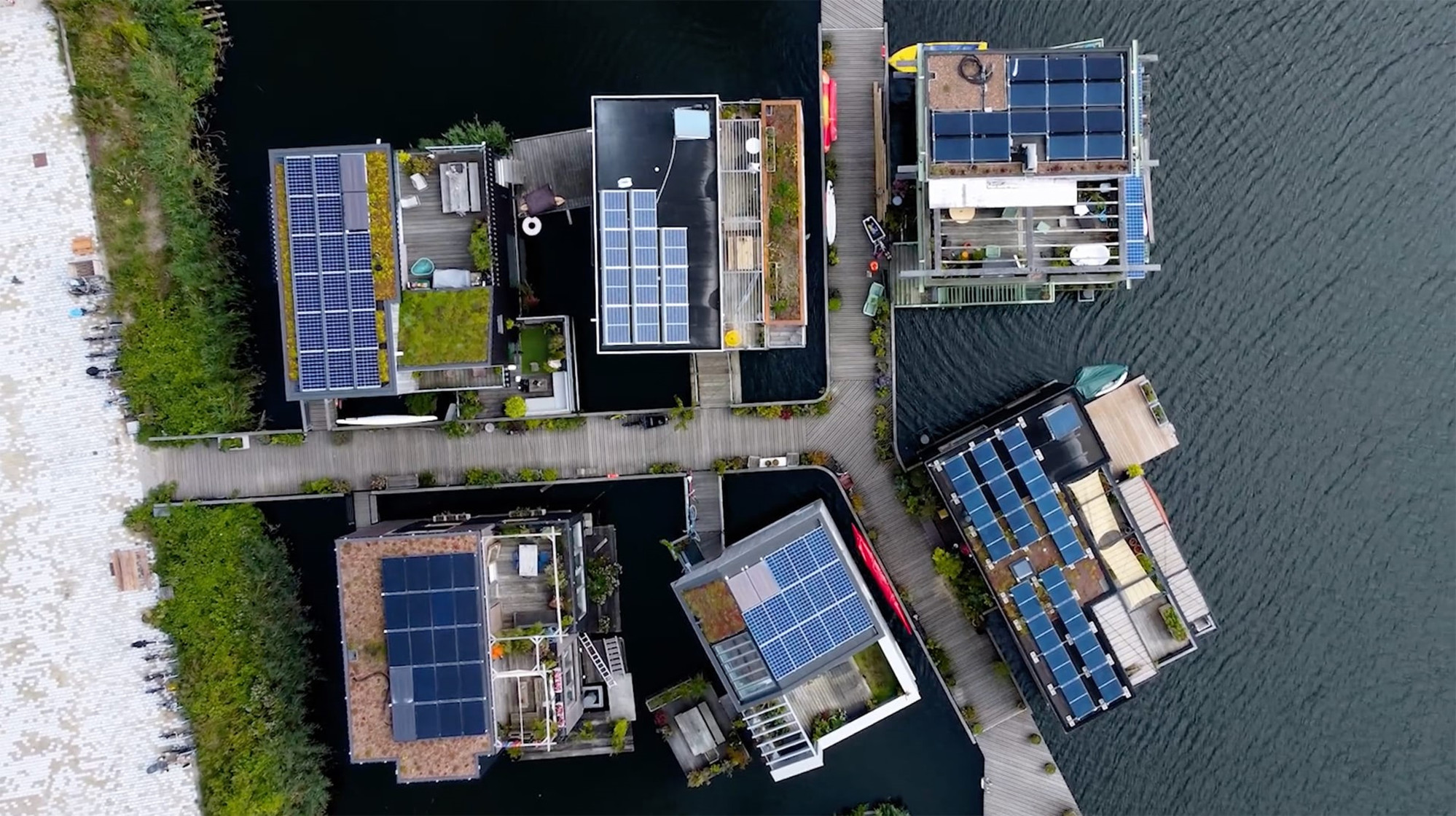
Pool says the project, in Amsterdam, was community-driven, not developer-driven, after local initiator Marjan de Blok “felt inspired to create an energy-efficient, off-grid neighbourhood on the water with friends and acquaintances who shared her dream”.
On a small scale, Pool explains, Schoonschip applies innovative solutions to challenges posed by climate change. Living in eco-efficient prefabricated buildings, residents share common resources, from electric cars to self-generated clean energy.
“Built on a circular community model, the homes’ rooftop solar panels are connected to a smart grid where residents can trade energy with the help of blockchain technology,” Pool says. “Submerged heat exchangers are used for heating and cooling, and the sewerage system is a closed loop, connected to a small biorefinery.”

As more floating neighbourhoods are realised globally, Pool says much of the learning can be applied to architecture on land.
“In respecting the natural environment, users become more aware of resources, so we consume less,” he says. “This allows us to develop a very circular approach to urban development.”
To Klomps, climate resilience begins with sustainable construction.
“As human beings we are fully responsible for the contribution buildings make [to climate change] through embodied carbon emissions,” she says. “So, the more urgent topic is how we can make them better in terms of sustainability.”

The building codes in each country need to catch up, she adds.
“Architects, developers and contractors all need to be on board, too. Ultimately, if a client sees a tangible advantage in building more sustainably, it will help in pushing this agenda forward.”
Hong Kong participants include William Lim of CL3 Architects; Otto Ng of Laab Architects; Marisa Yiu of the Design Trust; and Christopher K. Ho of the Asia Art Archive.
After K-pop, K-drama and K-fashion, will K-design be Korea’s next big export?
BODW 2022 will also include a platform for emerging local talent. Their edge, says moderator William To, executive director of PMQ (deTour), is an innate knowledge that “allows our young designers to create works that appeal to both Asian and Western markets”.
“With the biggest manufacturing city in the world in our backyard [the Greater Bay Area], the expertise of these factories also makes prototyping fast, easy and inexpensive,” he adds.
A live-streamed panel discussion on December 2 will feature Dennis Cheung, architect and founder of Studio Ryte, and Adonian Chan, design director at Trilingua Design.
Cheung, known for creating furniture made from innovative sustainable materials, sees alternative solutions that respond to climate change as an exciting opportunity. One example is his Triplex Stool, made with flax, whose fibres are among the strongest in the plant world.
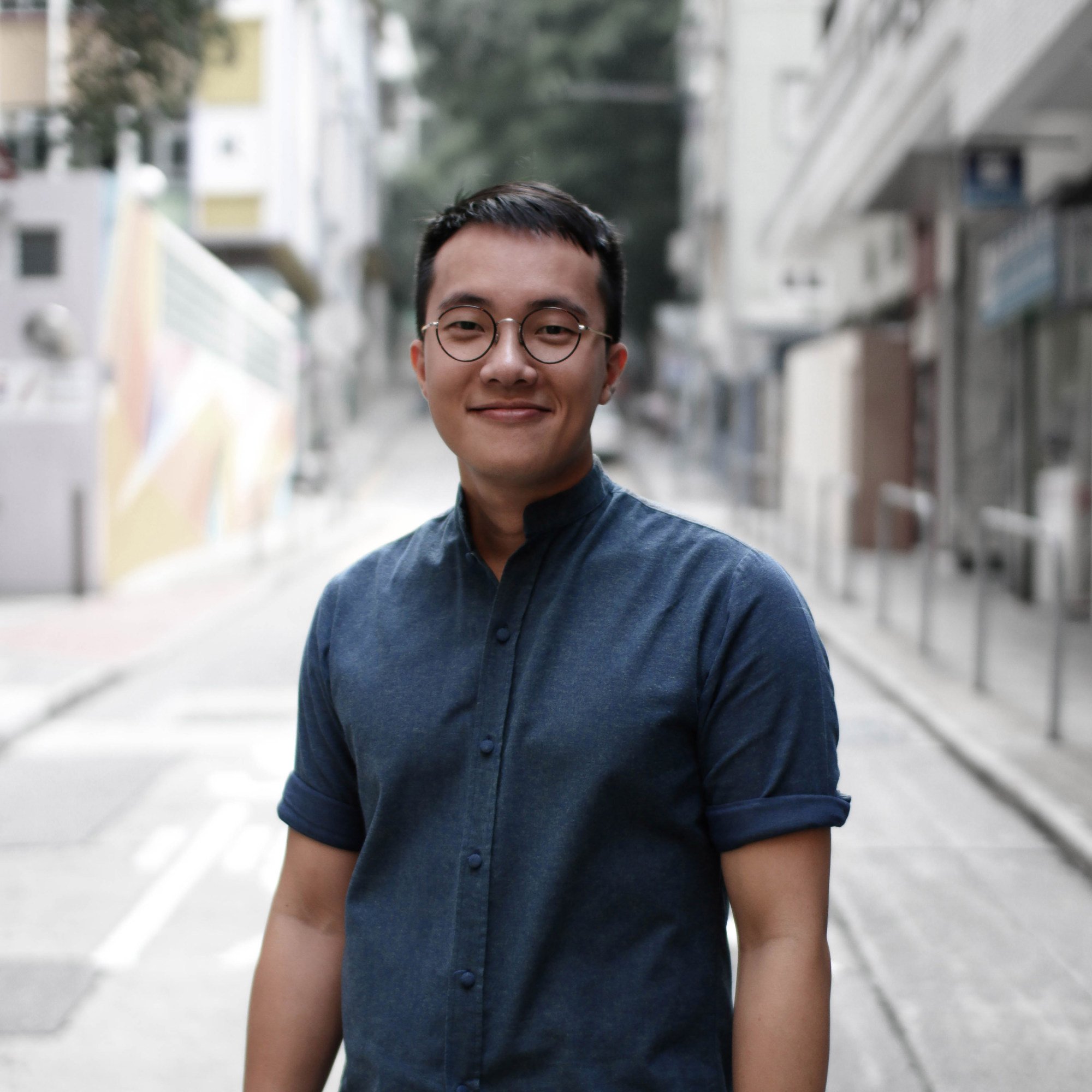

“Exploring novel yet sustainable materials that have not been widely used in the construction and manufacturing industry opens our mindset to identifying opportunities and effectively developing projects with uncertainties,” he says.
“Tackling these requires new understanding towards how we exploit resources, manufacture goods and consume products.”
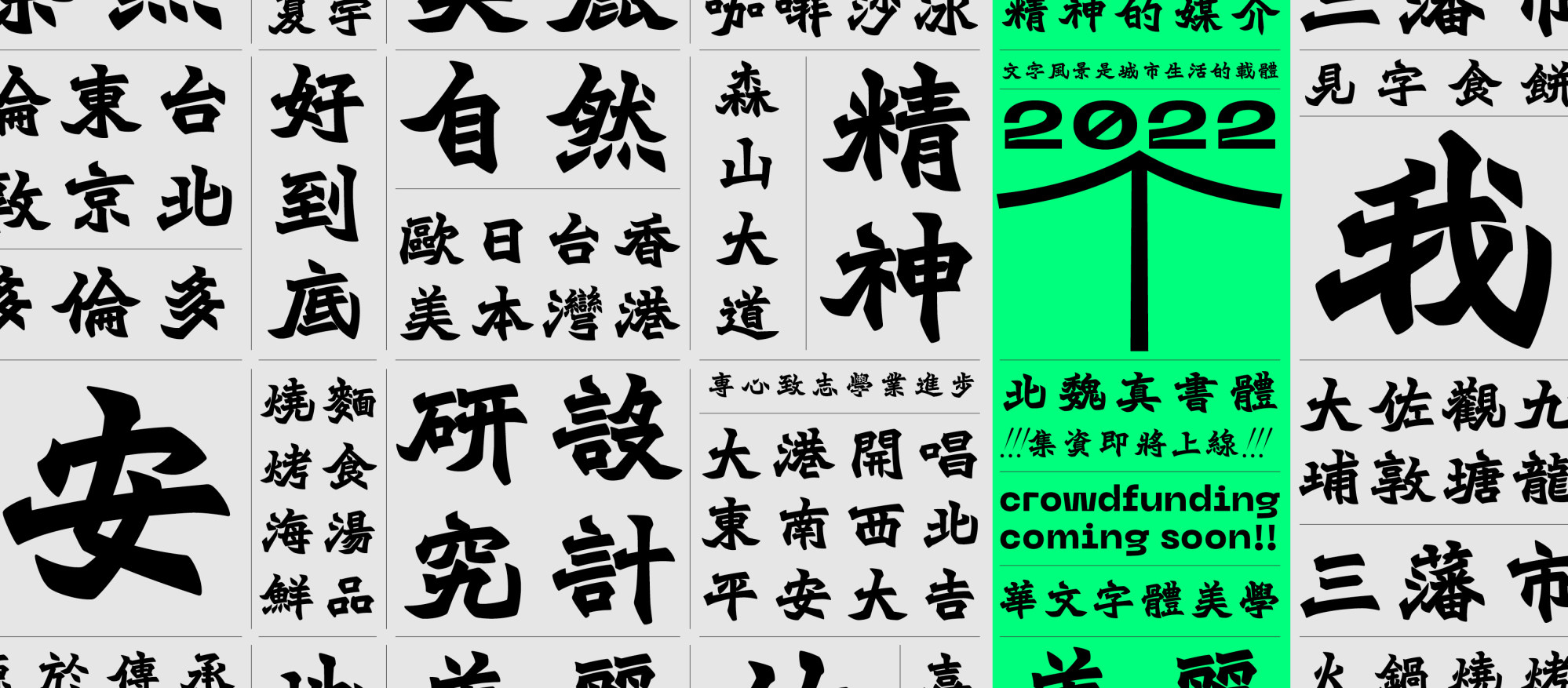
The core objective of the project, he adds, is to reinvent this visual culture heritage into a modern design “that fits the needs of today and inspires us to question the city’s identity”.
All panel discussions will be held at M+ museum, West Kowloon Cultural District, and broadcast on ViuTVsix and Bodw+. Tickets to access the sessions online and in-person are available for purchase on Bodw+.

